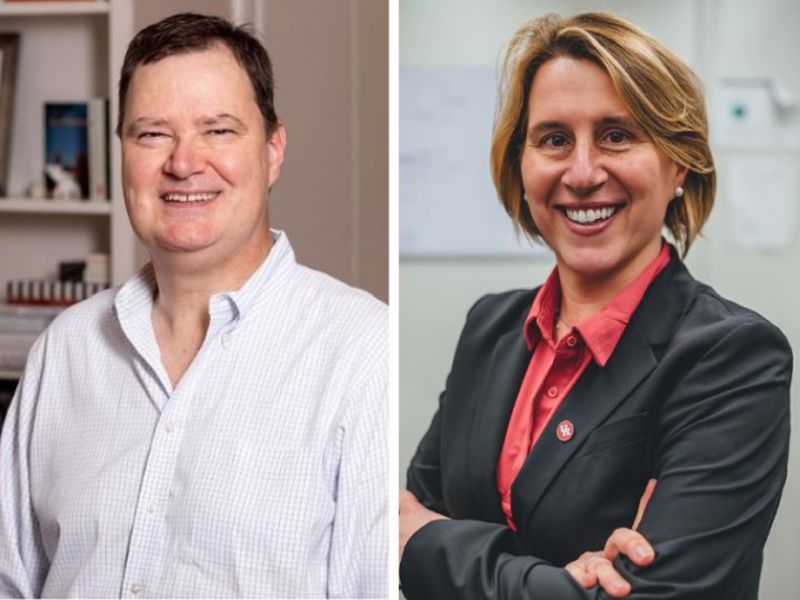The University of Houston is part of a $10 million effort from the National Institute for Innovation in Manufacturing Biopharmaceuticals (NIIMBL) to help address key opportunities for innovation in biopharmaceutical manufacturing.
Among the eight new technology and workforce development projects selected for funding by NIIMBL is one from the lab of Richard Willson, Huffington-Woestemeyer Professor of chemical and biomolecular engineering at UH. Willson’s project proposes a new mix-and-read antibody measurement system that uses fluorescent materials to determine the amount of antibody present in a sample.
It is hard to overstate the importance of antibodies, the molecular soldiers produced by immune cells that seize upon foreign invaders in the body, such as pollen or bacteria, and mark them for elimination. Since the development of making antibodies in the lab over 20 years ago, their popularity in medical treatments has soared, and approximately six of the top 10 selling drugs in the world are antibodies.
And still, scientists are working out the finer points of manufacturing.
“In the course of the manufacturing processes, it's important to know the concentration of antibody in your sample and this measurement needs to be made many times in a typical manufacturing process,” said Willson, who is no stranger to the fluorescent business and is pioneering the use of glow sticks to detect biothreats for U.S. Navy. A few years ago, he developed a fluorescent material (or reagent) that emits one color of light when excited with another color of light.
“The nice thing about this reagent is that it becomes more fluorescent in the presence of antibodies, and you can determine the amount of antibody present in a sample by using it,” said Willson. “Along with our industrial partners Genentech, Agilent and Bristol Myers Squibb, we think that this might be a useful tool for people who do everything from growing the cells that make the antibodies, to determining concentrations of antibody before purifying them.
Since the institute's launch in 2017, NIIMBL has awarded 123 member-led technical, workforce development, and Global Health Fund projects with an approximate value of $111M. Willson shepherded the University of Houston’s effort to join the organization, and this is the first grant the University has received from NIIMBL for technology development. The funding for the Willson’s project is $200,000.
On the Willson team are Katerina Kourentzi, research associate professor of chemical and biomolecular engineering at the University of Houston; Yan Chen, Agilent; Midori Greenwood-Goodwin, Genentech/Roche; and Mathura Raman, Bristol-Myers Squibb.
“One really distinguishing feature of this project is the tight coupling to industry,” said Kourentzi. “We got a lot of guidance from our industrial partners who volunteer to work with us through NIIMBL.”
